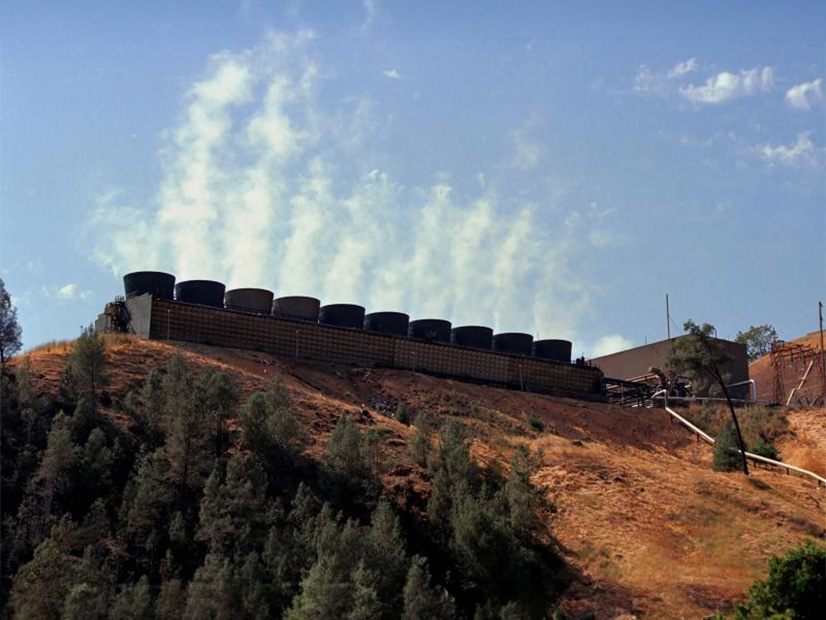
California regulators have approved a plan for the state to buy up to 10.6 GW of long-lead time clean energy resources, including 7.6 GW of offshore wind along with geothermal energy and long-duration energy storage.
The California Public Utilities Commission voted Aug. 22 to approve the central procurement plan. It is seen as a way of transforming the market for emerging technologies that will help the state meet its greenhouse gas reduction goals.
“With this new tool, California has the opportunity to jumpstart clean energy technologies and bring them to scale,” CPUC President Alice Reynolds said in a statement after the vote.
The CPUC will ask the state’s Department of Water Resources (DWR), through its Statewide Energy Office, to buy up to 10.6 GW of nameplate capacity including:
-
- 6 GW of offshore wind.
- 1 GW of geothermal generation.
- 1 GW of multi-day energy storage.
- 1 GW of energy storage with a discharge period of at least 12 hours.
The plan excludes long-duration storage that uses lithium-ion batteries. Pumped storage hydroelectric projects will be eligible only if they’re 500 MW or less and received state funding before 2023. The geothermal generation may be of any type.
The procurement will be on behalf of all energy providers within the CPUC’s jurisdiction, including investor-owned utilities, community choice aggregators and direct access providers. The benefits and costs will be split up among energy providers.
Solicitations will start in 2026 for long-duration storage and in 2027 for offshore wind and geothermal resources, with the resources coming online by 2037.
The resource quantities in the procurement are “up to” amounts. DWR or CPUC could decide to not buy the resources if they cost too much. The CPUC is expecting multiple rounds of solicitations in which costs would fall over time.
Assessing Need
The centralized procurement strategy is a component of Assembly Bill 1373 of 2023. Under AB 1373, resources eligible to be included in the strategy are those that don’t use fossil fuels or combustion to generate electricity and that have a lead time of at least five years for development and construction. (See New California Law to Give State Power to Procure Renewable Energy.)
The bill set a Sept. 1, 2024, deadline for the CPUC to determine if there’s a need for centralized procurement. To make that assessment, the CPUC evaluated utilities’ integrated resource plans and looked for gaps in certain resource types.
The CPUC saw a need for geothermal generation and long-duration storage but plans to ask DWR to solicit only about half the projected amount needed to meet renewable and zero-carbon energy targets.
This will “facilitate a down payment” on the technologies, “while still leaving room for LSEs to procure the technologies individually, after costs are reduced and market transformation is underway,” the agency said in its decision.
For offshore wind, the CPUC said 7.6 GW is enough to signal “a strong interest in developing the resource,” while going beyond that amount might be riskier for ratepayers.
The California Energy Commission in 2022 adopted the nation’s most ambitious long-term offshore wind goals, targeting a buildout of up to 5 GW by 2030 and 25 GW by 2045. (See California Adopts Country’s Most Ambitious OSW Targets.)
Utility Cost-sharing
The benefits and costs of centrally procured geothermal and offshore wind energy will be divided among energy providers within CPUC jurisdiction based on their annual load share. For long-duration storage, benefits and cost shares will be based on 12-month coincident peak demand.
More details of cost and benefit sharing will be worked out before any contracts are signed.
Although publicly owned utilities aren’t within CPUC jurisdiction, the agency recommended that DWR ask those utilities if they want to voluntarily participate in the centralized procurement.
The CPUC will reevaluate the need for additional centralized procurement of long-lead time resources in future IRP cycles. Previous need determinations won’t be reduced in that process, according to the CPUC decision.
CPUC Commissioner John Reynolds said approval of the procurement strategy “issues a challenge to the industry.”
“We want to see developers deliver on the immense potential of these technologies to deliver tangible ratepayer benefits and cost efficiencies with the economies of scale we are enabling here,” he said in a statement.



